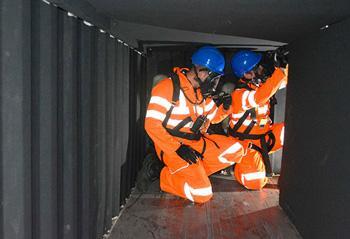pre-employment courses
Confined Space
The Confined Space course is specifically designed to educate individuals about the hazards associated with working in confined spaces and how to work safely in such environments. Some topics include:
Definition and identification of confined spaces: Participants learn how to identify confined spaces based on their characteristics, such as limited entry and exit points, a restricted means of entry or exit, and inadequate natural ventilation.
Atmospheric hazards: The course focuses on the atmospheric hazards that can be present in confined spaces. Participants learn about the dangers of oxygen deficiency, flammable gases or vapors, toxic gases or substances, and the importance of atmospheric testing and monitoring before entering a confined space.
Physical hazards: Participants gain an understanding of the physical hazards that can exist in confined spaces. This includes potential hazards like engulfment, entrapment, falls, noise, heat stress, and equipment-related hazards.
Entry and exit procedures: The course covers the proper procedures for entering and exiting confined spaces.
Personal protective equipment (PPE): Participants are educated on the appropriate personal protective equipment needed for working in confined spaces.
Emergency response and rescue: participants learn how to recognize and respond to emergency situations, including the appropriate actions to take and how to safely rescue a worker in distress.
Roles and responsibilities: Participants understand their roles and responsibilities as workers, supervisors, and employers when it comes to working in confined spaces. This includes understanding the importance of effective communication, cooperation, and compliance with relevant regulations and standards.
The Confined Space course equips individuals with the necessary knowledge and skills to identify and mitigate hazards associated with confined spaces. By following proper procedures and utilizing appropriate safety measures, participants can work safely in confined spaces, reducing the risk of accidents, injuries, and fatalities.

